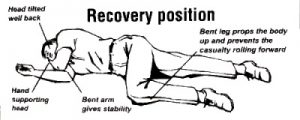It is difficult to imagine ourselves during our everyday routine, in a situation where we are faced with life, death and survival. Sadly, it has become common occurrence for large gatherings, or even daily activities to become the target of bad people looking to do bad things. Whether we are going to work, walking down the street or spending an evening out with our friends, the question we need to ask ourselves is how prepared are we to help ourselves and others in the event of an incident?
Being an Emergency Medical Service, we obviously would like you to be prepared for the more common incidence of a medical emergency by knowing basic first aid and CPR. Sadly, even our own focus has shifted to include training for the less likely, but more unsettling scenarios of shootings and other acts of violence that multiple victims are associated with.
The Albany County Sheriff shared a video on what to do during an active shooter incident. As an overview, you can view the video here. The principles highlighted in this video can be applied to a variety of scenarios where you may find yourself waiting for help to arrive and needing to tend to others or even yourself, not just an active shooter.
Regardless of the event, you can do certain things to help yourself and others survive if injuries are sustained. It may so happen that the first responders you see, are not there to administer first aid or evacuate victims, so you may be waiting a while.
 First and foremost, try to stay calm and get yourself to the safest place possible if you cannot evacuate the scene. Be aware of your surroundings at all times and call 911 when it is safe to do so.
First and foremost, try to stay calm and get yourself to the safest place possible if you cannot evacuate the scene. Be aware of your surroundings at all times and call 911 when it is safe to do so.
Likely injuries to be seen during incidents such as shootings or even natural disasters, will involve bleeding. If someone is suffering from an arterial injury, they can die from blood loss in less than a minute. Placing direct pressure over the spot that is bleeding is the first step in attempting to stop deadly bleeding. Anything can be used make a bandage in an emergency, but the important part is constant pressure. 
 If constant pressure does not stop the bleeding, you may have to make and apply a tourniquet. You can make one (or several) with strips of cloth and a hard object such as a stick, pens, markers, scissors (you may have to use your imagination). If you or someone else is wearing a belt, that will work as well.
If constant pressure does not stop the bleeding, you may have to make and apply a tourniquet. You can make one (or several) with strips of cloth and a hard object such as a stick, pens, markers, scissors (you may have to use your imagination). If you or someone else is wearing a belt, that will work as well.
Unfortunately, some may be too injured for you to help. if you encounter someone who is not awake or will not answer you or follow direction, the best thing to do may be to leave them where they are in what is called the recovery position. Place the person on their side, with their bottom arm outstretched, top arm under the head and top knee bent to ensure they do not roll onto their stomach. The head should be somewhat tilted back This is the safest position for them to be in if they are not awake or unable to move. 
